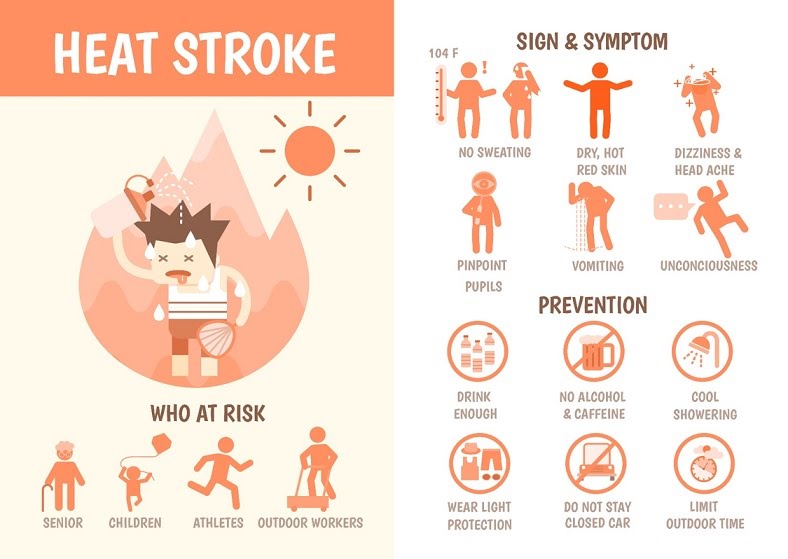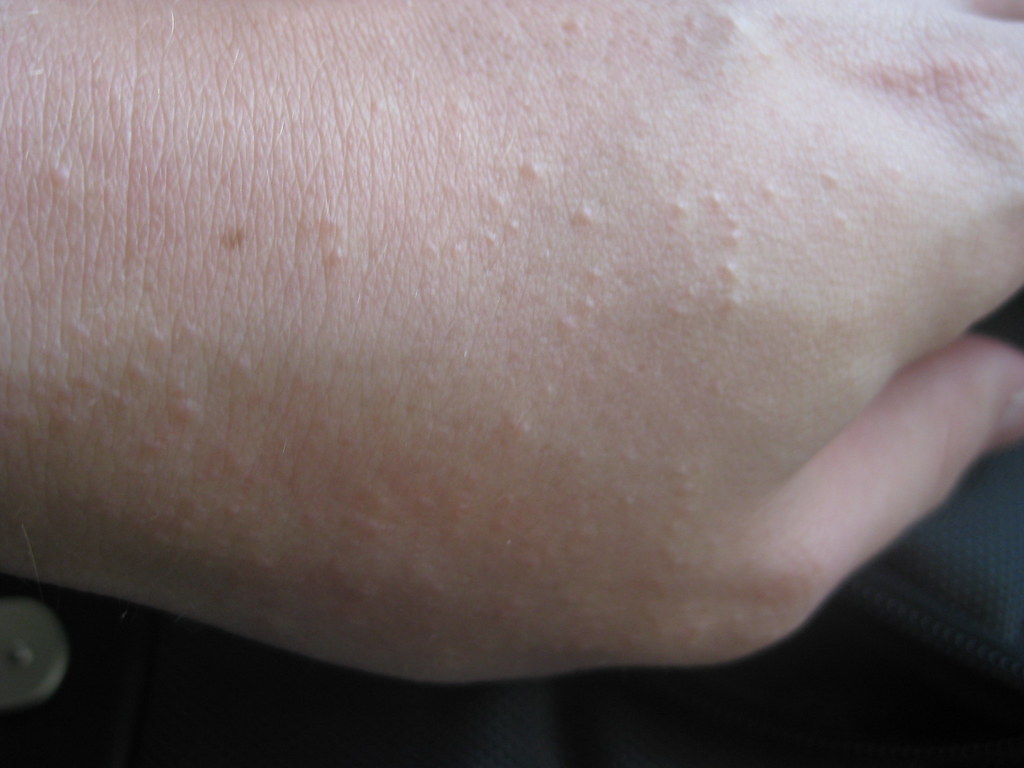Heat rash, also known as miliaria, is a common skin condition that occurs when sweat ducts become blocked, trapping perspiration beneath the surface of the skin. This can lead to discomfort and irritation, especially during hot and humid weather. While it is not typically serious, heat rash can cause significant discomfort and may require attention to prevent complications. In this article, we will explore the causes, symptoms, prevention strategies, and treatment options for heat rash.

What Causes Heat Rash?
Heat rash develops when sweat ducts are obstructed, preventing sweat from reaching the surface of the skin to evaporate. Several factors contribute to this blockage:
- Hot and Humid Weather: High temperatures and humidity levels increase sweating, which raises the likelihood of clogged sweat ducts.
- Tight Clothing: Wearing tight or non-breathable fabrics can trap sweat against the skin, leading to blockages.
- Prolonged Bed Rest: People who are bedridden, especially those with fever or other conditions that cause excessive sweating, are more prone to developing heat rash.
- Physical Activity: Intense exercise or physical labor in hot environments can exacerbate sweating and increase the risk of heat rash.
- Newborns and Infants: Babies have underdeveloped sweat ducts, making them particularly susceptible to heat rash.
Symptoms of Heat Rash
The symptoms of heat rash vary depending on the severity of the condition. There are three main types of heat rash, each with distinct characteristics:
Miliaria Crystallina
This is the mildest form of heat rash and is characterized by small, clear blisters filled with fluid. These blisters are usually painless and do not cause itching. Miliaria crystallina affects only the top layer of the skin and tends to resolve on its own without treatment.
Miliaria Rubra
Also known as “prickly heat,” miliaria rubra occurs deeper in the skin and is marked by red bumps and an itching or prickling sensation. This type of heat rash is more common in adults and can lead to inflammation if left untreated.
Miliaria Profunda
This is the most severe form of heat rash and occurs when sweat leaks into the deeper layers of the skin. It presents as larger, flesh-colored bumps and is often accompanied by a lack of sweating in the affected area. Miliaria profunda is less common but requires medical attention due to the potential for complications.
Prevention Strategies for Heat Rash
Preventing heat rash involves minimizing exposure to conditions that trigger excessive sweating and ensuring proper skin care. Here are some effective strategies:
Dress Appropriately
Wear loose-fitting, lightweight clothing made from breathable fabrics such as cotton. Avoid synthetic materials like polyester, which can trap heat and moisture against the skin.
Stay Cool
Use air conditioning or fans to keep your environment cool and well-ventilated. If you are outdoors, seek shade and take breaks in cooler areas whenever possible.
Avoid Overheating
Limit physical activity during peak heat hours and stay hydrated to regulate body temperature. Drinking plenty of water helps maintain proper sweat production and prevents dehydration.
Keep Skin Dry
After sweating, gently pat your skin dry with a clean towel instead of rubbing. Applying talcum powder or cornstarch can help absorb excess moisture and reduce friction.
Care for Newborns
Ensure that babies are dressed in light clothing and avoid over-bundling them, even in cooler weather. Regularly check their skin for signs of heat rash and keep their sleeping area well-ventilated.
Treatment Options for Heat Rash
In most cases, heat rash resolves on its own once the skin cools down and sweat ducts are no longer blocked. However, there are several measures you can take to alleviate discomfort and speed up recovery:
Cool Compresses
Apply a cool, damp cloth to the affected area to soothe irritation and reduce inflammation. Avoid using ice directly on the skin, as this can cause further damage.
Topical Treatments
Over-the-counter hydrocortisone creams or calamine lotion can help relieve itching and discomfort. For more severe cases, a doctor may prescribe medicated ointments to reduce inflammation and promote healing.
Avoid Scratching
Scratching the affected area can worsen the condition and increase the risk of infection. Keep fingernails short and clean to minimize the chance of breaking the skin.
Loosen Clothing
If heat rash develops under tight clothing, change into looser garments to allow the skin to breathe. This will help prevent further irritation and promote faster healing.
Consult a Healthcare Professional
If the rash does not improve within a few days or shows signs of infection, such as pus, increased redness, or swelling, consult a healthcare provider. They may recommend additional treatments or investigate underlying conditions that could be contributing to the problem.
When to Seek Medical Attention
While heat rash is generally harmless, certain situations warrant medical attention. These include:
- Persistent symptoms lasting more than a week despite home treatment
- Signs of infection, such as warmth, swelling, or pus-filled blisters
- Development of fever or chills alongside the rash
- Occurrence of heat rash in unusual locations, such as the face or groin
A healthcare professional can assess the severity of the condition and provide appropriate guidance or treatment options tailored to your specific needs.
Lifestyle Adjustments for Long-Term Management
For individuals who frequently experience heat rash, making long-term lifestyle adjustments can significantly reduce the likelihood of recurrence. Consider the following tips:
Adopt a Balanced Diet
Eating a diet rich in fruits and vegetables supports overall skin health and helps regulate body temperature. Foods high in water content, such as cucumbers and watermelon, can aid hydration.
Exercise Wisely
Choose indoor workouts or schedule outdoor activities during cooler parts of the day. Wear moisture-wicking clothing designed to draw sweat away from the skin.
Practice Good Hygiene
Regular bathing with mild soap removes sweat and dirt from the skin, reducing the risk of clogged pores. After bathing, apply a gentle moisturizer to keep the skin hydrated without clogging sweat ducts.
Monitor Environmental Conditions
Pay attention to weather forecasts and plan accordingly. On days with high heat and humidity, prioritize staying indoors or taking precautions to stay cool.
Special Considerations for Vulnerable Populations
Certain groups, such as infants, elderly individuals, and those with chronic health conditions, are at higher risk of developing heat rash. Special care should be taken to protect these populations:
Infants
Babies should be kept in cool, shaded environments and dressed in minimal clothing. Frequent diaper changes and gentle cleansing can prevent rashes in sensitive areas.
Elderly Individuals
Older adults may have reduced ability to regulate body temperature, making them more susceptible to overheating. Encourage them to stay hydrated and use cooling aids like fans or wet towels.
Individuals with Chronic Conditions
People with diabetes, obesity, or other conditions that impair sweating should work closely with their healthcare providers to manage symptoms and reduce the risk of complications.





